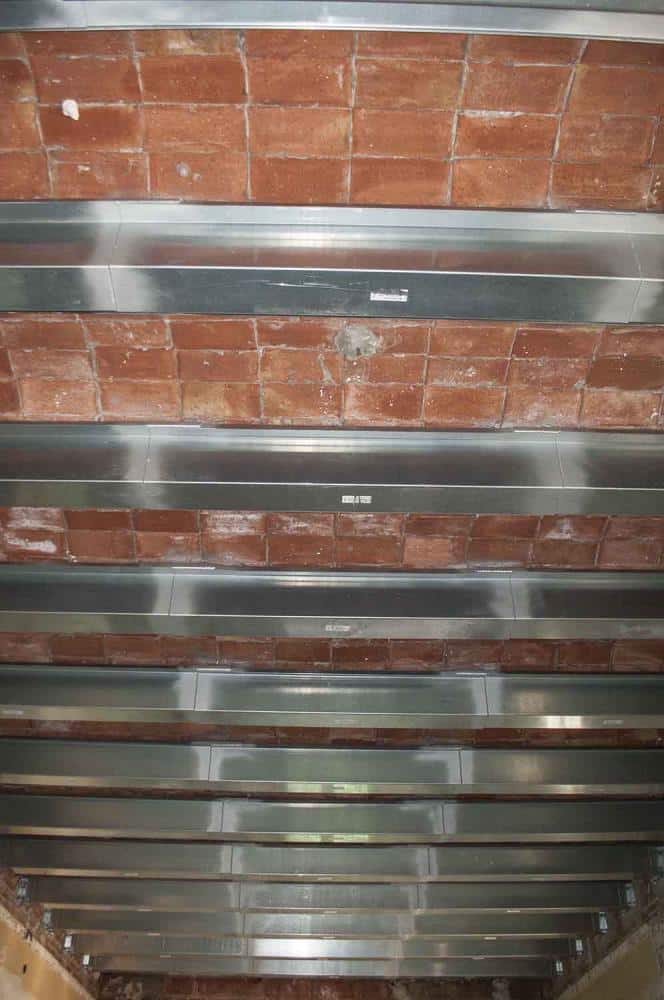What is aluminosis, background and chemical composition
Aluminosis is one of the most feared pathologies in the construction world and you have surely heard of the structural problems that it entails. You probably associate this problem with landslides, evictions and countless other problems, but what is aluminosis and how can it be detected? The first thing we have to know is that aluminosis is a problem that appears in reinforced concrete that contains aluminous cement.

The reinforced concrete is composed of portland cement and aggregates. Cement is an essential material in the current construction system, but it is not perfect and one of its defects is the long setting time that it entails. During the 20th century, it was discovered that adding a specific component, alumina, makes the cement set faster, thus speeding up construction times. This aluminous cement was used because, unlike normal portland cement, it acquires maximum strength much earlier, if normal concrete does not reach its maximum strength until 28 days after starting the setting, the aluminous cement can achieve maximum resistance in ¡ only 24 hours! Between the 50s and 70s there was a need to build many houses and very quickly, for that reason it was widely used.

Later and after the construction of thousands of constructions with this cement time it was discovered that the compound is unstable and that, after prolonged exposure to various atmospheric factors, such as humidity or environmental heat, it undergoes chemical changes that make concrete does not fulfill the protective function of the steel of the inner reinforcements , this phenomenon is called aluminosis. The reinforcements can rust for this reason and its deterioration means that the concrete elements can deteriorate severely. This is especially dangerous when dealing with structural elements since the failure of one of these elements can mean the total or partial collapse of a building. But let’s not be alarmed, if aluminous cement is properly cared for it is not necessarily dangerous.
Aluminosis is not a serious problem if it is controlled and has not caused problems yet
Below we briefly explain what symptoms a building with aluminosis suffers and how to detect them.
How to spot the symptoms of aluminosis
First of all, we must know that the humid places in a building are always the most affected. Therefore we will have to look for problems in kitchens, bathrooms, showers, changing rooms, areas under cover, etc.
In order to properly examine the structure of a building, tests must be carried out on the structural elements, therefore, leaving the structure of the building visible. Some common symptoms can also be identified more easily and by visual or tactile methods:
- Color of the cement used: In cases of aluminous cement, a color change occurs, going from gray to brown or greenish.
- Cohesion to the touch: we should scrape slightly, a high disintegration of the material will be directly related to the resistance of the material.
In case of doubts during the visual inspection, it is best to request the services of specialists to carry out tastings or other more sophisticated methods to assess in detail the state of the building’s structure. These are the most common methods performed:
- Phenolphthalein method a: By tasting, a small sample of the cement of the structure is extracted and subjected to a test to check if it undergoes carbonation.
- Reinforcement adherence method: The adherence that the reinforcement of the interior of the structure maintains with the surrounding concrete is assessed. In this way, the mechanical resistance of the assembly is assessed.
How to solve aluminosis, its rehabilitation
As mentioned, aluminosis affects the structure, deteriorating it from the inside, which is why the best solution is early rehabilitation .
If the effects of aluminosis are partial, there are quick and relatively easy solutions. This process can involve coating the old elements to reinforce them and protect the interior steel from the action of humidity. If the impact is greater, remove and cancel each of the elements of the structure (beams, walls, etc.) and place or build completely new ones.
-

Aluminous concrete beams -

Anchoring and jacketing NOUBAU system -

Repaired aluminous concrete beams
On the contrary, in cases where the affectation is total (the most common situation in this type of pathology), the replacement of the structural elements may be more expensive than the construction of a new structure. Then the most logical thing could be to tear down the building.
From what we have explained, it is best not to wait until it is very affected and to know as soon as possible if you have aluminosis in your building.
In case you suspect that your building may suffer from aluminosis, contact with a specialist so that they can perform a structural analysis of your building.














